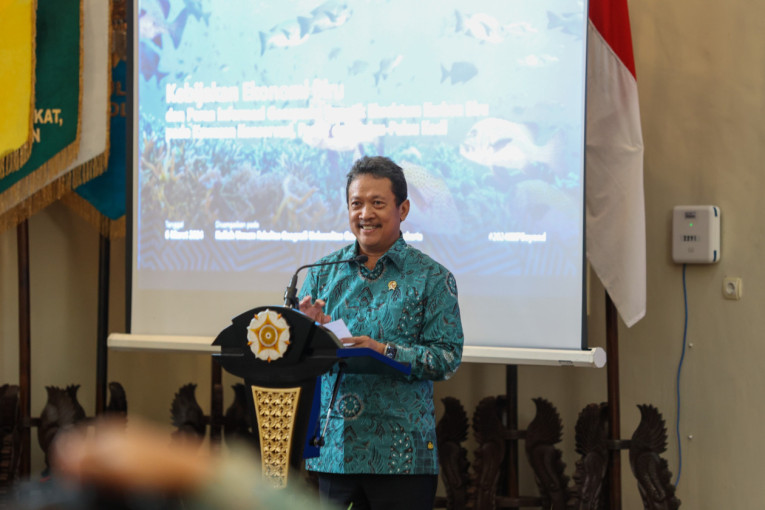
Minister of Marine Affairs and Fisheries of Indonesia Wahyu Sakti Trenggono highlighted his ministry’s commitment to developing five key marine aquaculture commodities. This initiative aims to uplift the livelihoods of approximately 140 million coastal residents.
The selected aquaculture commodities include shrimp, seaweed, tilapia, crab, and lobster, with a substantial market share totaling around 400 billion US dollars annually.
“Our focus is on creating sustainable growth and prosperity,” emphasized the minister during a public lecture titled “New Economic Policies and the Role of Thematic Geospatial Information Blue Carbon Ecosystem in Conservation Areas, Coastal Areas, and Small Islands,” held on Wednesday (Mar. 6) at the UGM Senate Hall.
The foundation of this aquaculture drive begins with the establishment of modern fisherfolk villages. These villages are pivotal to transforming fisherfolk habitats and social spheres into productive and self-sufficient communities.
The development entails constructing essential facilities such as ice factories, training centers, cold storage warehouses, fisherfolk workshops, supply kiosks, access roads, docks, and pedestrian paths. A notable pilot project for these modern villages is underway in Samber Village, Biak Numfor Regency, Papua.
The minister underscored the significance of these modern fisherfolk villages in unlocking Indonesia’s potential in the aquaculture sector. He referenced how many countries, like Australia, have learned valuable aquaculture techniques from nations like Norway.
“For example, Australia learns salmon aquaculture from Norway. They bring in Norwegians,” he elaborated.
Highlighting the importance of aquaculture initiatives, the minister emphasized that uplifting fisherfolk’s welfare would remain challenging without such efforts. The average exchange rate index for Indonesian fisherfolk is approximately 104, but it ideally should reach 130 for substantial prosperity.
“Achieving a higher exchange rate is essential for our fisherfolk to thrive and prosper,” he added.
In discussing the economic prospects of blue carbon absorption in marine areas and conservation zones, the minister pointed out its significant contribution to the economy. He stressed the need for comprehensive data sources facilitated by developing extensive ocean data infrastructure systems.
“We have launched nanosatellites, brought in ships that can monitor, underwater drones, and installed sensors throughout conservation areas and remote islands to monitor changes in conservation areas 24 hours a day,” he said.
In response, Professor Ova Emilia, the Rector of Universitas Gadjah Mada, acknowledged Indonesia’s economic potential from its coastal and maritime sectors. She highlighted the university’s role in supporting fisherfolk welfare and addressing climate change impacts through collaborative efforts with the Ministry of Marine Affairs and Fisheries.
“We are committed to providing integrated blue carbon ecosystem data, building on our past collaborations in mapping blue carbon seagrass ecosystems,” she concluded.
Author: Gusti Grehenson
Photographer: Donnie

